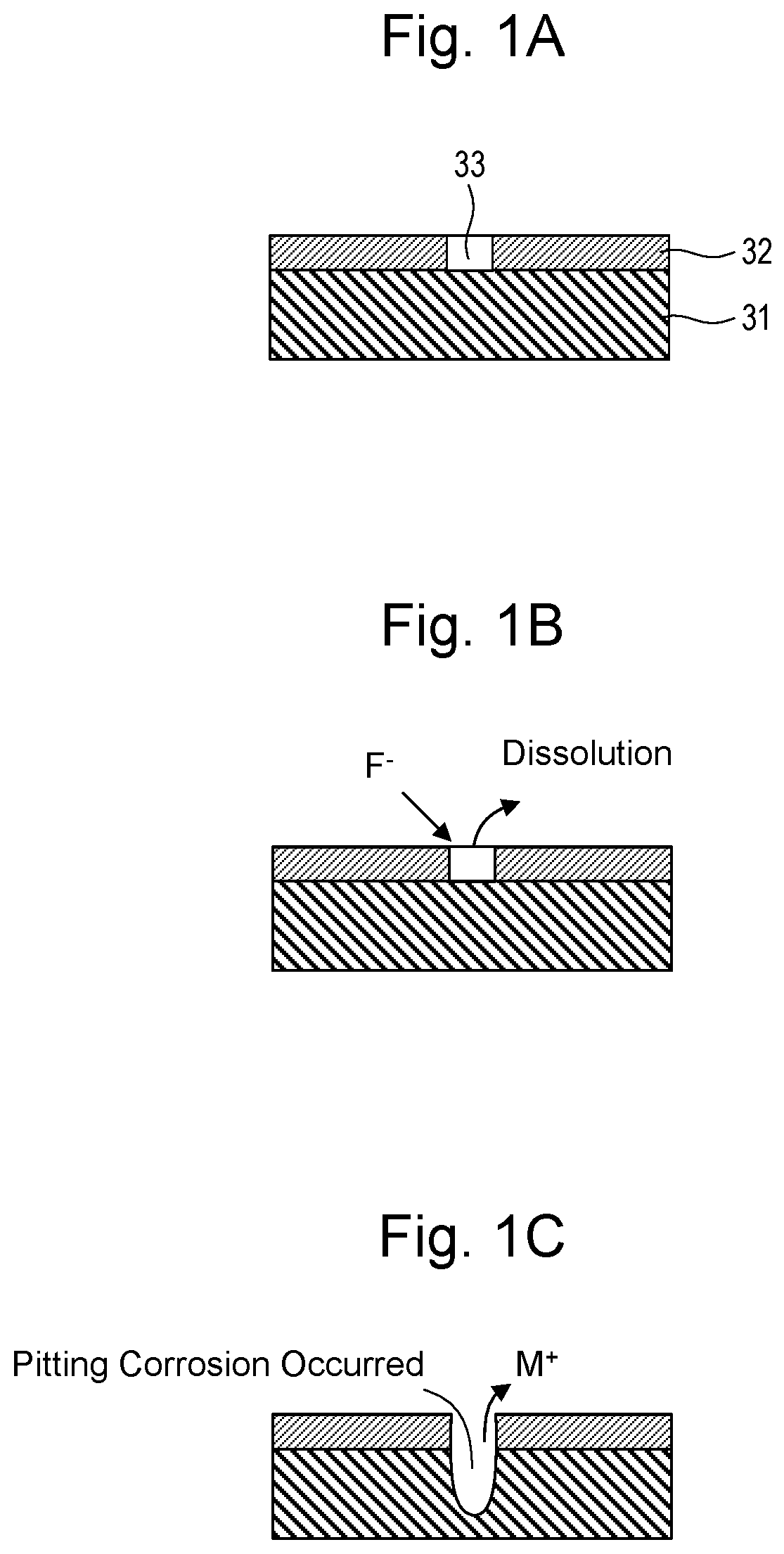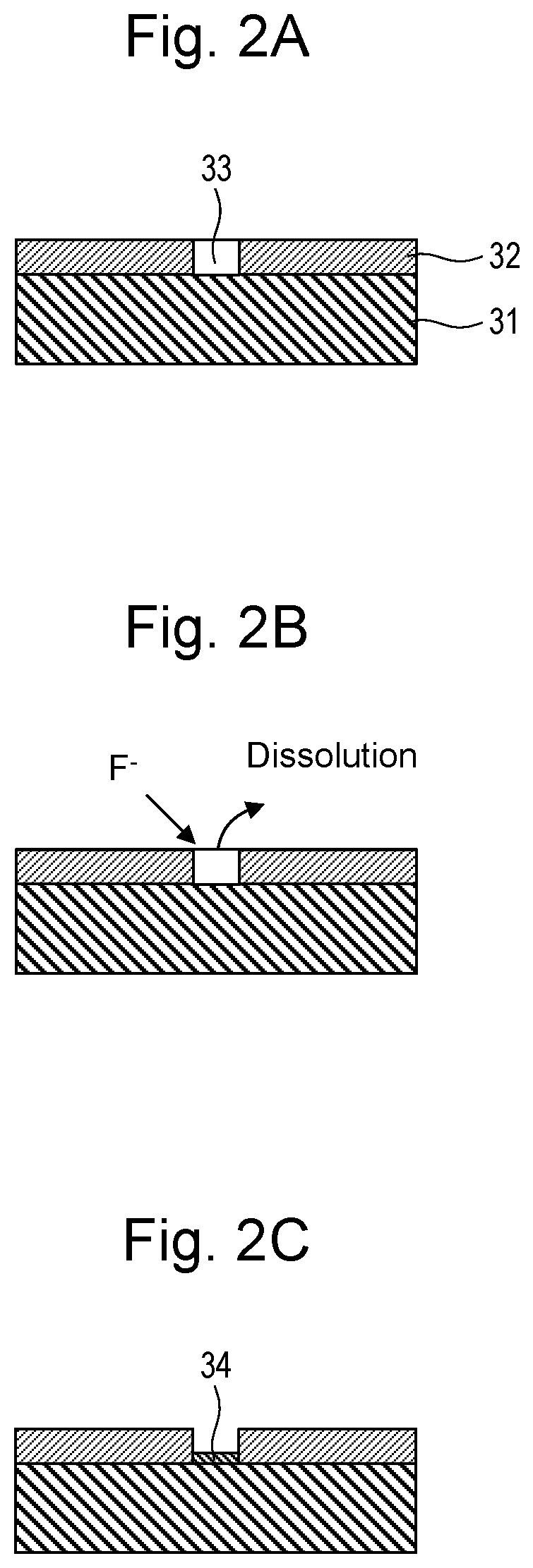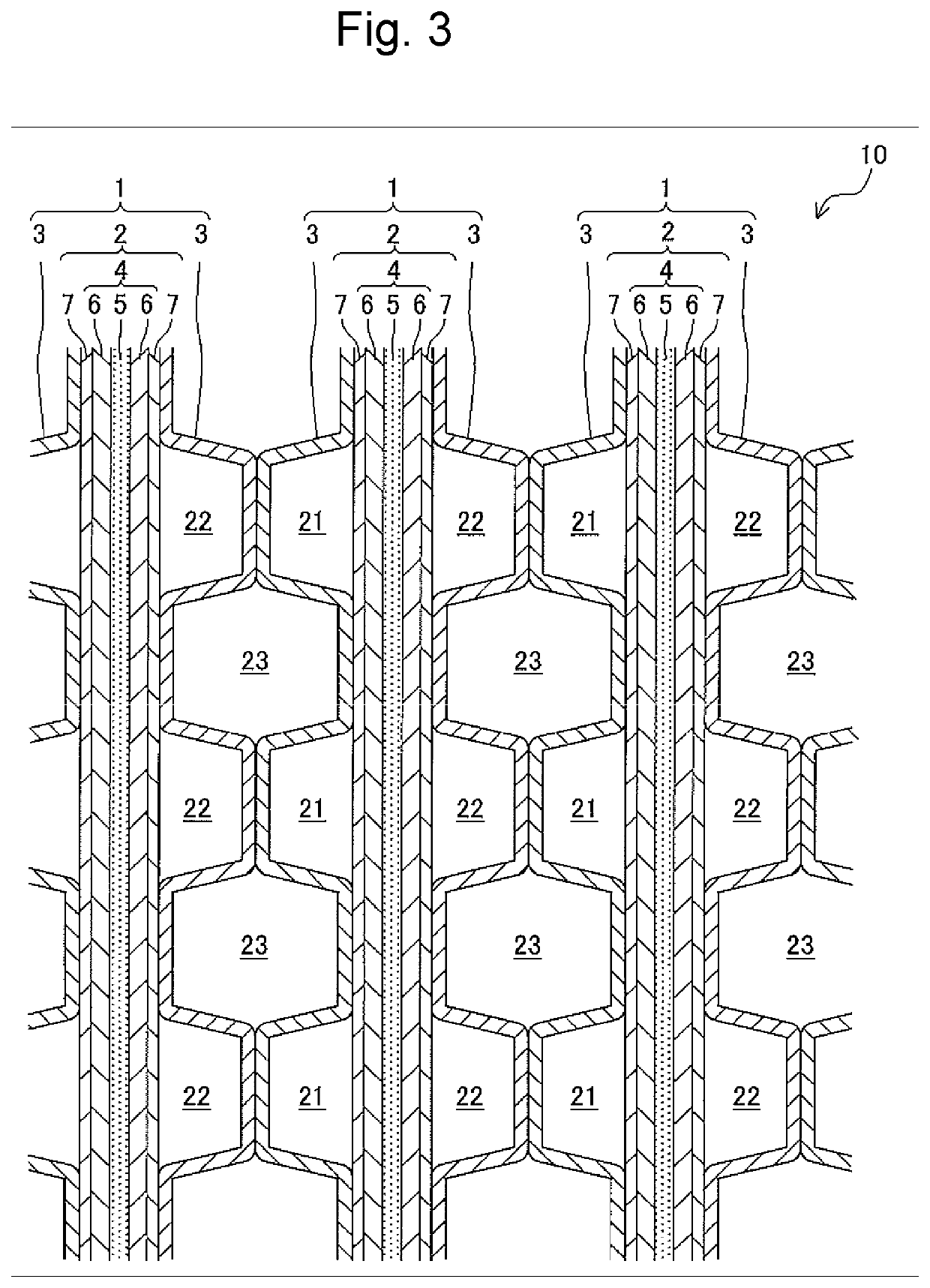Fuel cell separator and fuel cell device
a fuel cell and separator technology, applied in the field of fuel cell separator and fuel cell device, can solve the problems of pitting corrosion, defective parts of tin oxide film, metal oxide possibly generating defective parts, etc., and achieve excellent corrosion resistance and low contact resistance
- Summary
- Abstract
- Description
- Claims
- Application Information
AI Technical Summary
Benefits of technology
Problems solved by technology
Method used
Image
Examples
example 1
[0064]A test piece corresponding to the separator was manufactured in accordance with a method described below. First, SUS447 plate having a thickness of 0.1 mm was prepared as the stainless steel substrate of the separator. Next, the stainless steel substrate was installed inside a vacuum container, argon gas was introduced in the vacuum containers under a vacuum condition, a voltage was applied to generate argon ions, and an oxide film on a surface of the stainless steel substrate was removed with these argon ions.
[0065]Next, tin oxide particles and antimony oxide particles were mixed and sintered to produce a sintered body as a target, and the sintered body was disposed in the vacuum container. Targeting this sintered body, a tin oxide film was formed on the surface of the stainless steel substrate by sputtering. Specifically, first, the stainless steel substrate was disposed at a position facing the target, and the vacuum container was vacuated to put the vacuum container under ...
PUM
| Property | Measurement | Unit |
|---|---|---|
| thickness | aaaaa | aaaaa |
| thickness | aaaaa | aaaaa |
| thickness | aaaaa | aaaaa |
Abstract
Description
Claims
Application Information
 Login to View More
Login to View More - R&D
- Intellectual Property
- Life Sciences
- Materials
- Tech Scout
- Unparalleled Data Quality
- Higher Quality Content
- 60% Fewer Hallucinations
Browse by: Latest US Patents, China's latest patents, Technical Efficacy Thesaurus, Application Domain, Technology Topic, Popular Technical Reports.
© 2025 PatSnap. All rights reserved.Legal|Privacy policy|Modern Slavery Act Transparency Statement|Sitemap|About US| Contact US: help@patsnap.com



